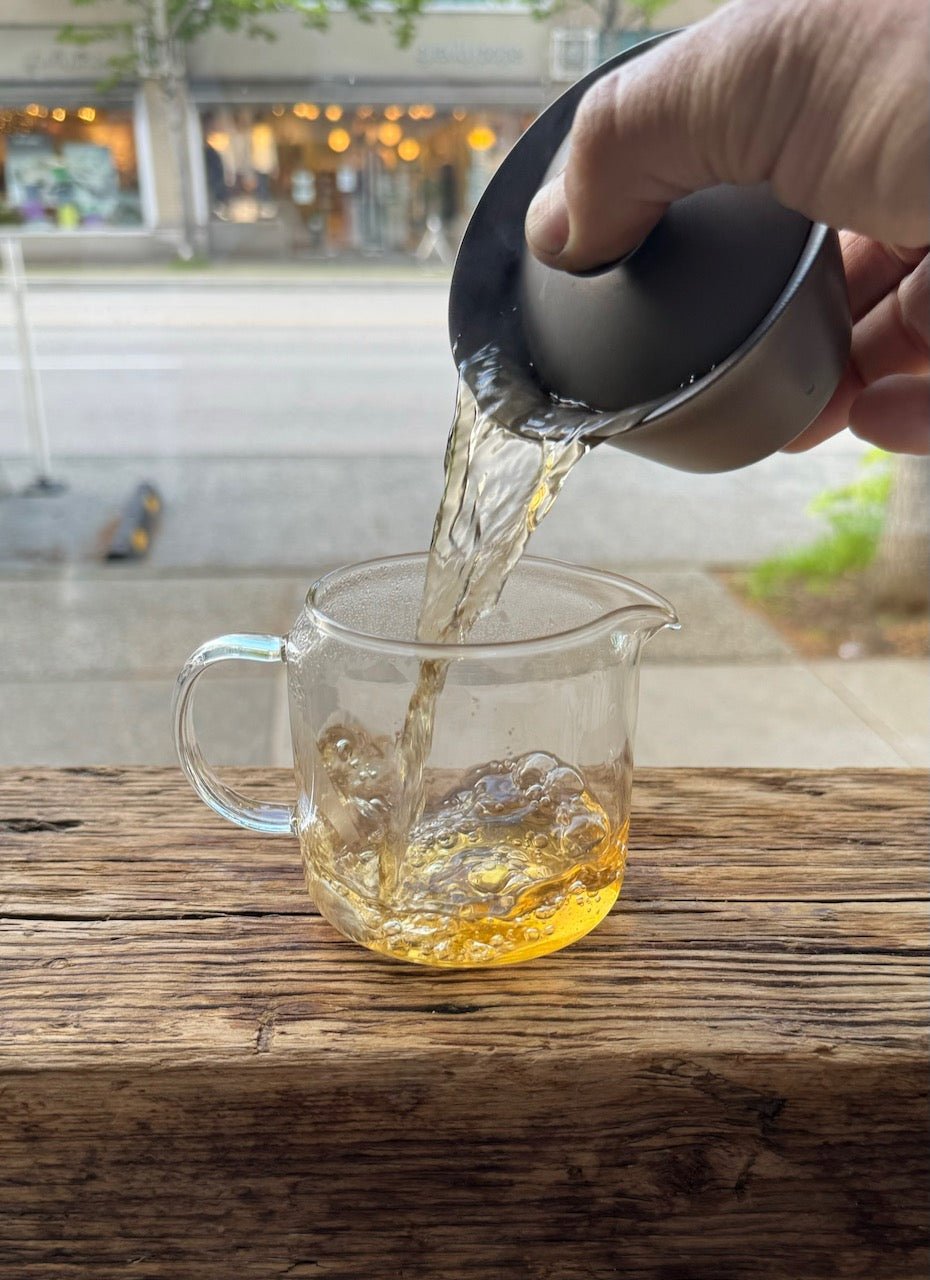
Pu Er Tea (Also Known as Pu Erh Teas)
Pu Er (often searched as 'Pu Erh teas') is the most famous category of post-fermented tea. Some tea drinkers stumble upon them after reading about 'Pu Erh benefits'; since the launch of Xiaguan Tuo Cha's 'Xiao Fa Tuo' in French pharmacies in the 1980's, multiple sources have recommended consuming Pu Er for health reasons. There is, however, much more to it!
Enter a universe that fascinates (for different reasons) whisky lovers, yoga practitioners, coffee geeks, and… us, tea aficionados. Whether you’re looking for insane aromatics, the almost impossible-to-describe ‘gan’ feeling (more on that below), or tea to accompany your daily meditation practice, we can’t recommend Pu Er enough.
Pu Er is a group of teas which fall under the ‘dark tea’ (嘿茶) category; this category encompasses several styles of fermented teas. Strictly speaking, the term Pu Er should only be used to describe tea that grows in China’s Yunnan Province.
Pu Er is known as a post-fermented tea. After the tea is produced and released, it is customary to age the tea a few years before consumption.
The Name: The Chinese characters 普洱 are romanized as ‘Pu Er’ in Pinyin (China’s official system since 1958) or ‘Pu Erh’ in Wade-Giles (an older system). In Mandarin, the pronunciation of 普洱 is quite close to ‘Poo Arr’.
In other countries: you may hear Japanese people refer to Pu Er as プーアル茶 (Pu A Ru Cha), and Koreans as 보이차 (Bo Hee Cha); within China, Cantonese people call it ‘Bo Lay’.
Please consider: tea growers in the countries that border southern Yunnan (Vietnam, Myanmar, Laos) often call their tea ‘Pu Er’ too. We know a good number of both Chinese and Western folks who would strongly disapprove. However, it is worth considering that national border lines in the region have varied significantly over the centuries. What may not be ‘officially' Pu Er today may have been completely acceptable to a tea drinker in the 18th or 19th centuries.





